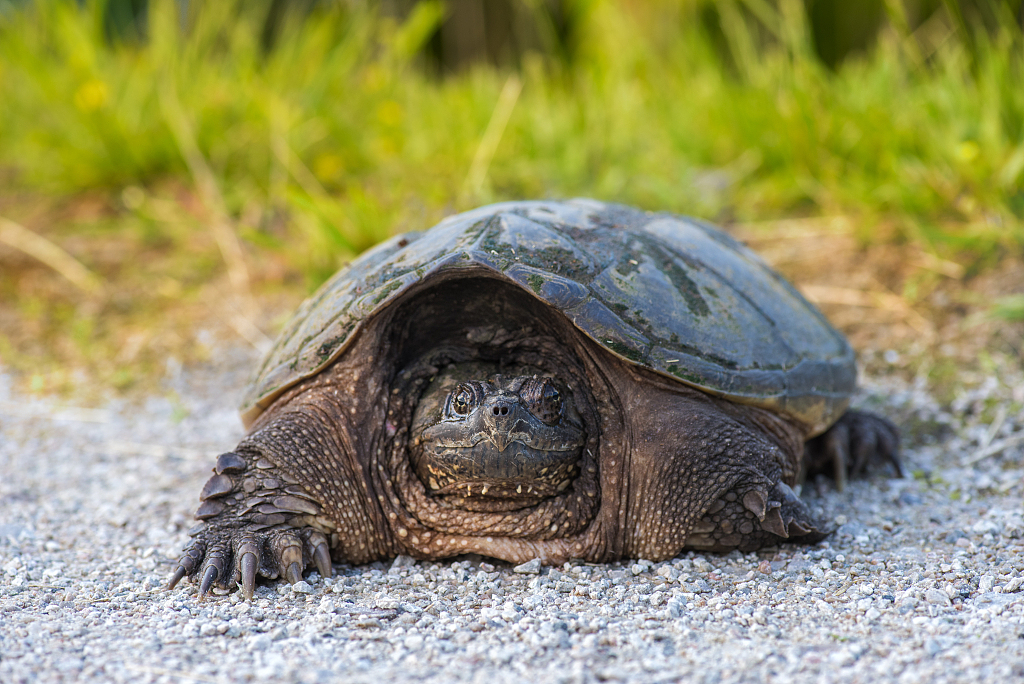A scientific expedition to the Galapagos Islands will spend 10 days searching for relatives of two tortoise species believed to be extinct, including those of the archipelago's Lonesome George, park officials said Friday.

Galapagos tortoises' numbers declined from over 250,000 in the 16th century to a low of around 3,000 in the 1970s. Their populations on at least three islands have become extinct in historical times due to human activities. /VCG Photo
Galapagos tortoises' numbers declined from over 250,000 in the 16th century to a low of around 3,000 in the 1970s. Their populations on at least three islands have become extinct in historical times due to human activities. /VCG Photo
George, the last known member of the Pinta tortoise species, died in 2012 at over 100 years of age after refusing to mate in captivity with females from related subspecies.

Galapagos tortoise is the name of several species. Modern Galapagos tortoises can weigh up to 417 kg. With lifespans in the wild of over 100 years, they are one of the longest-lived vertebrates. /VCG Photo
Galapagos tortoise is the name of several species. Modern Galapagos tortoises can weigh up to 417 kg. With lifespans in the wild of over 100 years, they are one of the longest-lived vertebrates. /VCG Photo
Park rangers and scientists from the Galapagos National Parks (PNG) and Galapagos Conservancy will tour the Wolf Volcano on Isabela Island in hopes of "locating and removing a group of giant tortoises with partial lineage" to the extinct Pinta and Floreana species, the park said in a statement.
They chose the area because whalers and pirates who would eat the animals were thought to have dumped some of the tortoises there in the past to lighten their ships' loads.

Originally, there were 15 species of Galapagos tortoise, now only 10 survive in the wild; an 11th species had only a single known living individual, kept in captivity and nicknamed Lonesome George until his death in June 2012. /VCG Photo
Originally, there were 15 species of Galapagos tortoise, now only 10 survive in the wild; an 11th species had only a single known living individual, kept in captivity and nicknamed Lonesome George until his death in June 2012. /VCG Photo
The Galapagos Islands, located 1,000 kilometers (620 miles) off the coast of Ecuador in the Pacific Ocean, were made famous by Charles Darwin's studies of their breathtaking biodiversity.
In 2008, a similar expedition took blood samples from 1,726 tortoises, 17 of which had a "significant percentage" of genes in common with the Pinta species while about 80 showed a "partial lineage" to the Floreana species, PNG said.
Studies have found "tortoises that have up to 90 percent of the extinct species' genes, meaning that at least one of their parents is a purebred and possibly lives on Wolf Volcano," said Jorge Carrion, the park's director.
The expedition is searching for suitable tortoises to begin a breeding program in captivity with the hope of eventually repopulating the islands, said expedition leader Washington Tapia.
Eleven giant tortoise species remain on the Galapagos Islands, while four others have been classified as extinct since Darwin's 1835 arrival.
(If you want to contribute and have specific expertise, please contact us at nature@cgtn.com.)
Source(s): AFP